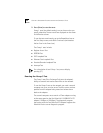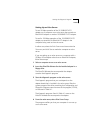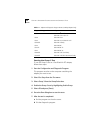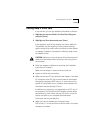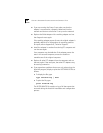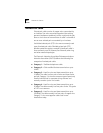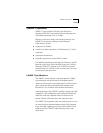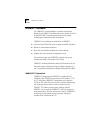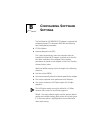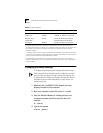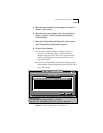
A-2 APPENDIX A: CABLING
Twisted-Pair Cable
Twisted-pair cable consists of copper wires surrounded by
an insulator. Two wires are twisted together (the twisting
prevents interference problems) to form a pair, and the pair
forms a circuit that can transmit data. A cable is a bundle of
one or more twisted pairs surrounded by an insulator.
Unshielded twisted pair (UTP) is the most commonly-used
type of twisted-pair cable. Shielded twisted pair (STP)
provides protection against crosstalk. Twisted-pair cable is
now commonly used in Ethernet, Fast Ethernet, token ring,
and other network topologies.
The Electronic Industries Association/Telecommunications
Industries Association (EIA/TIA) defines the following five
categories of twisted-pair cable:
■ Category 1—Traditional telephone cable.
■ Category 2—Cable certified for data transmissions up to
4 MHZ.
■ Category 3—Used for voice and data transmission up to
16 Mbps. The cable has four pairs of wires and three twists
per foot. Category 3 is the most common type of previously
installed cable found in corporate wiring schemes and
normally contains 4 pairs in a bundle.
■ Category 4—Used for voice and data transmission up to
20 Mbps. The cable normally has four pairs of wire. This grade
of UTP is not common.
■ Category 5—Used for voice and data transmission up to
100 Mbps. The cable normally has four pairs of copper wire.
Category 5 is the most popular cable used in new
installations today.



